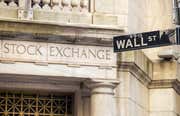While fixed income and equity investments for the core of a diversified portfolio, alternative asset classes can provide added diversification, while reducing volatility and potentially enhancing returns. These alternative investments can also be used for trading or hedging existing positions.
Currency ETFs
Currency ETFs are designed to track currency movements, and can be used for hedging or speculation. The underlying investments in a currency ETF are rather foreign cash deposits or futures contracts. Currency ETFs based on futures invest the excess cash in high-quality bonds like U.S. Treasuries. Currency ETFs are available for most major currencies including the Euro, Japanese Yen, and British Pound, as well as for important emerging market currencies like the Chinese Yuan and Indian Rupee. In addition to single currencies, currency ETFs are also available for a basket of currencies. Examples of currency ETFs include:
- CurrencyShares Euro Trust (FXE)
- WisdomTree Emerging Currency Fund (CEW)
- PowerShares DB US Dollar Bullish Fund (UUP)
Commodity ETFs
Commodity ETFs make it easy invest in an asset class that was otherwise quite difficult for retail investors to access. These ETFs should form part of a well-diversified portfolio because of their low correlation with equities and usefulness as a hedge against inflation. Commodity ETFs may either track a single commodity like gold or oil, or track a basket of different commodities. They may either hold the actual commodity, or purchase futures contracts and invest the balance funds in government bonds. Examples of popular commodity ETFs include:
- United States Oil Fund (USO)
- SPDR Gold Trust (GLD)
- PowerShares DB Commodity Index Tracking Fund (DBC)
Inverse ETFs and Leveraged Inverse ETFs
Inverse ETFs can be used to bet against an upward move in the market, either for hedging or speculation. Leveraged inverse ETFs take this notion a step further, by providing returns that are twice or thrice the inverse of the daily price moves in an index. Inverse ETFs either use short positions on the underlying assets, or implement short positions using futures. Inverse ETFs are available not just for equities, but also for bonds, currencies, commodities, and volatility. A major problem with inverse ETFs is that because they seek investment results that correspond to the inverse of the daily performance of an underlying security, returns over periods greater than one day will likely differ in magnitude and direction from the target return for the same period. Inverse ETFs and leveraged inverse ETFs therefore are best used for very short-term trading periods. Examples include:
- ProShares Short S&P 500 ETF (SH)
- Direxion Daily 20-Year Treasury Bear 3x (TMV)
- VelocityShares 3x Inverse Crude Oil ETN (DWT)
- ProShares Short VIX Short-Term Futures (SVXY)
In addition to alternative ETFs, there are certain ETFs that do not fit into the equity or fixed income categories, such as the one discussed below.
Multi-Asset ETFs
These assets contain multiple asset types; in addition to equities and bonds, they may include real estate and commodities. While they appeal to investors who are looking to obtain a diversified portfolio under one umbrella, management fees are likely to be higher for such ETFs. Examples include
- iShares Core Growth Allocation ETF (AOR)
- First Trust Multi-Asset Diversified Income Index Fund (MDIV)
Exchange-Traded Funds: ETF Investment Strategies
-
 Investing
InvestingA Guide to Using Inverse ETFs for Diversification
A look at how inverse ETFs can help investors diversify their portfolios. -
 Investing
InvestingThe Long and Short of Inverse ETFs
When applied properly, inverse ETFs can be a useful tool for traders. -
 Investing
InvestingThe Risks of Investing in Inverse ETFs
Discover analyses of the risks inherent to inverse exchange-traded funds (ETFs) that investors must understand before considering an investment in this type of ETF. -
 Investing
InvestingTop 4 Inverse ETFs for a Bear Market
These four bear-market inverse ETFs will keep you safe when the market drops. -
 Investing
InvestingYoung Investors: 5 Benefits ETF Investing is Ideal
ETFs Investments have a number of characteristics that make them attractive to young investors. Understand these five features to better your investments. -
 Investing
InvestingETF Investing (SPY): Main Attractions
As the popularity of ETFs soar, here's a look at the main benefits of these investment vehicles. -
 Investing
Investing3 Popular Leveraged Financial ETFs in 2016 (UWTI, DWTI)
Discover how leveraged ETFs work and the risks that come with investing in them. Learn about the three largest leveraged ETFs in financial services. -
 Investing
InvestingA Look at the Growth of the ETF Industry
Explore the phenomenal growth of the ETF industry, and learn some of the principal reasons why ETFs are projected to continue growing at a rapid pace. -
 Investing
InvestingThe Advantages of ETFs Compared to Index Funds
With the ongoing ETF boom, ETFs gain more variety and increased competition in the market leads to further investors' advantages compared to index funds. -
 Investing
InvestingThe Top 5 Inverse-Bond ETFs
These inverse Bond-ETF offerings should give investors a good overview of some of the options out there.



